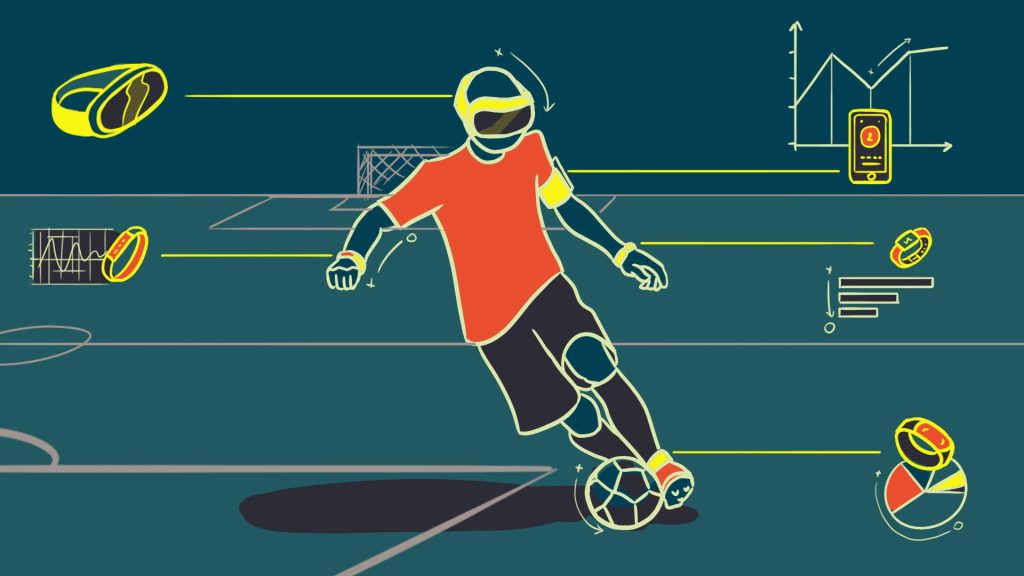Tech for Training: How Wearable Technology is Revolutionizing Student-Athlete Performance

The world of sports has always been driven by a quest for better performance, and today’s student-athletes are at the forefront of a revolution that is fundamentally changing how they train, recover, and compete. Wearable technology, once the stuff of science fiction, has now become an essential tool for athletes who are looking to gain an edge in their respective sports. These devices, ranging from smartwatches to advanced biometric sensors, are providing insights that were previously unimaginable, enabling athletes and their coaches to make data-driven decisions that enhance performance, reduce injury risk, and optimize recovery.
One of the most significant impacts of wearable technology on student-athletes is its ability to provide real-time feedback during training sessions. In the past, athletes and coaches relied heavily on subjective assessments and post-training analysis to evaluate performance. Now, with the help of wearables, athletes can receive immediate data on various metrics such as heart rate, speed, distance, and even muscle activity. This real-time feedback allows athletes to adjust their effort levels instantly, ensuring that they are training at the optimal intensity to achieve their goals. For instance, a runner can monitor their pace and adjust it on the fly to maintain the desired speed, while a basketball player can track their jump height to ensure they are consistently reaching their peak performance during drills.
Wearable technology also plays a crucial role in injury prevention, a critical aspect for student-athletes who must balance the demands of academics and sports. These devices can monitor an athlete’s biomechanics, such as gait, posture, and joint angles, identifying potential issues that could lead to injury if left unaddressed. By analyzing this data, coaches and trainers can tailor training programs to correct imbalances or weaknesses, reducing the likelihood of injuries that could sideline an athlete. For example, a wearable device that tracks the impact forces on a football player’s knees during practice can help detect early signs of strain, allowing for interventions that can prevent more severe injuries like ACL tears.
Recovery is another area where wearable technology is making a profound difference. The demands placed on student-athletes are immense, and recovery is often the key to sustained performance throughout a season. Wearable devices can monitor sleep patterns, heart rate variability, and other physiological markers to assess an athlete’s recovery status. With this information, athletes can adjust their recovery strategies, such as incorporating more rest, modifying their diet, or using specific recovery techniques like ice baths or compression therapy. This personalized approach to recovery ensures that athletes are not only prepared for their next practice or game but are also reducing the risk of overtraining, which can lead to burnout or injury.
The use of wearable technology extends beyond individual performance and recovery, influencing how entire teams train and compete. Coaches now have access to a wealth of data that can be used to optimize team strategies and game plans. By analyzing the collective data from all players, coaches can identify patterns and trends that might not be apparent from observing games or practices alone. For example, if data shows that a soccer team’s overall sprint speed declines significantly in the final 15 minutes of a match, the coach might implement specific conditioning drills or adjust substitution strategies to maintain peak performance throughout the game. This data-driven approach to coaching allows for more informed decisions that can make the difference between winning and losing.
Moreover, wearable technology fosters a culture of accountability and empowerment among student-athletes. With access to their performance data, athletes can take greater ownership of their training and recovery processes. They can set personal goals, track their progress, and make informed decisions about how to improve. This sense of ownership can be incredibly motivating, as athletes can see the tangible results of their hard work and dedication. Additionally, the ability to share data with coaches and teammates promotes a collaborative environment where everyone is working towards the same goals with a clear understanding of what needs to be done to achieve them.
The advancements in wearable technology are also contributing to the democratization of sports performance analysis. What was once available only to elite professional athletes is now accessible to student-athletes at all levels. This accessibility means that even athletes at smaller schools or those with limited resources can benefit from the insights provided by wearable devices. As these technologies continue to evolve and become more affordable, their impact on the development of young athletes is likely to grow, leveling the playing field and giving more athletes the opportunity to reach their full potential.
As we look to the future, the integration of wearable technology in sports is expected to deepen, with innovations such as artificial intelligence and machine learning further enhancing the insights that these devices can provide. Imagine a scenario where an athlete’s wearable device not only tracks their performance but also predicts the likelihood of injury based on cumulative data, offering real-time recommendations for adjustments in training or recovery. This level of precision and personalization could redefine how athletes train and compete, pushing the boundaries of human performance in ways we are only beginning to understand.
In summary, wearable technology is revolutionizing student-athlete performance by providing real-time data, enhancing injury prevention, optimizing recovery, and empowering athletes to take control of their development. As these technologies continue to advance, they are set to play an even more significant role in shaping the future of sports, ensuring that the next generation of athletes is better equipped than ever to succeed both on and off the field.

